Why do we have eyebrows? Can we taste food if we can't smell it? What's a cold sore? This week, we take on your science questions, as well as explore the world of social gaming, and find out how much it costs to fly an England flag from your car. We'll be asking if altitude affects how a football flies, if a large enough fan could propel a spacecraft and how spiders spin webs from one tree to the next. Plus, why size matters in bird beaks, how plant roots cope with competition and building lungs in the lab!
In this episode
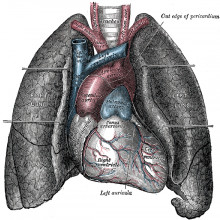
- Re-grown lungs a breath of fresh air for respiratory diseases
Re-grown lungs a breath of fresh air for respiratory diseases
In a first of its kind experiment, US-based scientists have re-grown a functioning lung that could be successfully implanted into a rat. Writing in the journal Science, Yale researcher Thomas Petersen and his colleagues describe the technique, which could in the future be used to provide genetically compatible lungs for patients with lung damage caused by respiratory diseases or smoking.
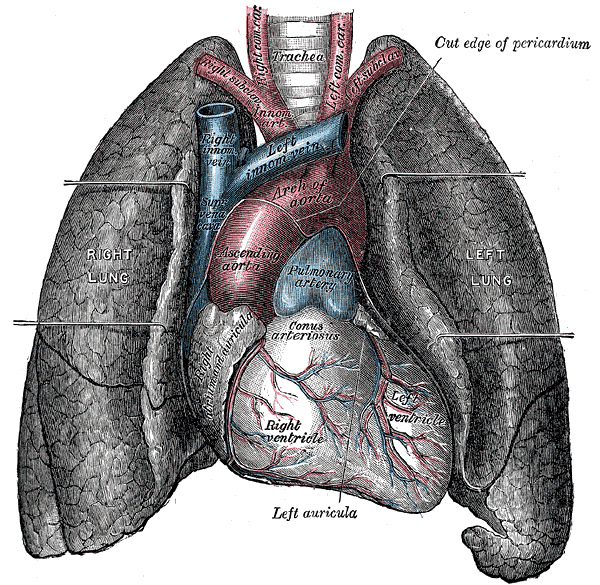
The team used lung tissue collected from rats, which they treated with detergent solutions to remove all of the cells. This left behind a lung-shaped framework of supporting tissue, which was then immersed in a culture vessel containing nutrient solutions and "seeded" with lung cells from donor rats. Incredibly, within a week, the cells had re-grown over the scaffold provided by the supporting tissue, giving rise to the full spectrum of cells normally found in a mature lung, including airway lining cells and even cells that produce surfactant, the chemical that keeps the smallest airways open.
The ultimate pulmonary coup-de-gras, however, came when the team transplated the re-grown lungs into four rats, successfully connecting the airways and blood vessels to those of the recipient animal. The re-grown lungs performed effectively for up to two hours and oxygenated blood with high efficiency.
Although a small study and at an early stage, this work suggests that the same trick could be used to provide genetically-compatible lungs for patients with pulmonary diseases; by first replacing the cells in a donor lung with those from the recipient it might be possible to avoid the problems of immune-rejection, which plague current lung transplant patients. The ultimate goal, though, is to work out how to make the supporting structures too; then complete sets of all-new lungs can become a reality...

- What would happen if you jumped down a hole through the centre of the Earth?
What would happen if you jumped down a hole through the centre of the Earth?
Andrew: - You would absolutely fall out the other end. So you'd accelerate all the way until you got to the centre and then you'd decelerate all the way until you got to the other end and then you would come to a graceful stop, just as you got to the hole in Australia if you jumped in in the UK, and that would be that.
Chris: - And you then oscillate presumably? Andrew: - If you didn't actually manage to stop yourself when you got to the other end, and hopefully be prepared and you would, you would oscillate backwards and forwards forever.
Chris: - Some people say with the same rate as if you had a satellite doing an orbit around the earth. Andrew: - Well it depends slightly on exactly what orbit you put it into. If I remember correctly, it's about 42 minutes, the period of oscillation.

- Could a large enough fan propel a space shuttle?
Could a large enough fan propel a space shuttle?
Andrew - Okay. Let's tell this stuff one bit at a time. First of all, if space really were completely empty then a fan would be useless to try and propel you through it. Although the conservation of angular momentum is important here, what it would actually mean is that if you weren't very careful about how you constructed this, you would switch a fan on, and you would find that this spacecraft started rotating very fast in the opposite direction.
Chris - This could be uncomfortable for the people inside. Andrew - But actually, space isn't completely empty. So if you could get over this conservation of angular momentum problem perhaps by having two fans which were counter rotating then you could use the - if you're near the Sun - something like 5 to 10 protons in every centimetre cubed of space or if you're a bit further away from the sun, somewhere else in the galaxy, something like half a proton on average every centimetre cubed. If you got a really big fan, you could in principle use those protons to thrust against, but I've been just scribbling away, doing a really rough calculation here, and I've made some pretty generous assumptions and I wouldn't swear by this if NASA were asking me, but this is what I reckon. If you could take a really well designed spacecraft, say it was 10 tons. That's fairly light and it had a 100 metre radius fan and blades that were 1 metre deep, then I reckon you would get sufficient acceleration to get from 0 to 60 miles per hour in the age of the universe, so in about 14 billion years.
Chris - It's a pretty efficient system then. Andrew - Well I think we should certainly be funding, looking into this to see what the possibilities are, yeah. Chris - And this assuming that you had overcome, although you presumably wouldn't have overcome with one fan, the spacecraft spinning around the opposite way for the hectic ride for the people aboard.
Andrew - No. I think you need counter rotating blades definitely.
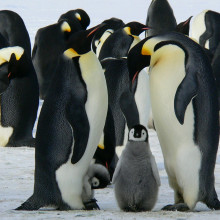
01:49 - Smaller beaks for colder climates
Smaller beaks for colder climates
Birds living in colder climates evolved smaller beaks than their fair-weather cousins to help keep them warmer, a new study shows.
Led by Matt Symonds from the University of Melbourne in Australia, the study published in American Naturalist looked at over two hundred bird species from across the globe - including African barbets and tinkerbirds, Australian parrots, Canadian gamebirds, penguins, and terns - to see how their beak sizes varied with the temperature regime of their native habitat.
We already know from thermal imaging studies that birds like toucans and geese can lose a lot of their body heat through their big beaks.
Now Symonds and the team have robust evidence that birds living in colder environments, whether that's towards the poles or up a mountain, tend to have smaller beaks.
It could be that birds in warmer climates have evolved bills to shed heat, but the authors think it's more likely that cold temperature is a constraint on the size of birds' beaks. A big beak radiating heat would be too much of a liability in a cold climate, no matter what other advantages might come with it, like communication or attracting mates.
This is the first in-depth study that backs up a 133 year old theory, called Allen's rule, which predicts that warm-blooded animals from colder parts of the world will evolve smaller appendages including ears, tails, and limbs.
The team didn't find such a strong relationship between bird leg length and temperature, suggesting that beaks are more important as a source of heat loss, and consequently the need to regulate body temperature has been an important factor in shaping the evolution of bird beaks.

04:40 - Plants can make decisions
Plants can make decisions
Scientists have discovered that plants are far less passive than we first thought and can integrate information to help them make decisions. University of Alberta researcher James Cahill and his colleagues made the discovery by growing specimens of a Chinese flower called Abutilon theophrasti (also called the Velvetleaf or China Jute) either in isolation, or together in the same pot, and then following where the roots went.

In a further twist, the team also varied where the nutrients were in the soil in the pot; in some cases the nutrients were evenly dispersed throughout, in other cases closer to one plant than another, or in the centre between two competing plants. In each case, after the plants had matured, the researchers chopped the leaves off and injected coloured dyes down the stems to mark up the tissue so that the root systems from each plant could be distinguished and measured. Plants growing in isolation on soil with homogeneous nutrient supplies produce extensive root balls, as do plants growing on soils where the nutrients are eccentrically placed, whilst plants growing in competition on soils with homogeneously-distributed nutrients avoid each other like the plague and the roots never overlap.
But the real surprise came when the team tested what happens when the nutrients are placed between the two plant specimens. This time, it turns out, the plants will allow their roots to overlap each other, indicating that they are weighing up the costs and benefits of competing with their flower-bedfellow whilst simultaneously gaining access to a limited resource.
This level of integration and decision making had never previously been appreciated in plants, which appear a "hole" lot sharper than we first thought!

06:55 - Astronomers close in on the mass of elusive neutrino particles
Astronomers close in on the mass of elusive neutrino particles
Physicists are desperate to explain shortcomings in our understanding of the behaviour of fundamental particles; an announcement this week from astronomers remind us that the sky can tell us as much -- perhaps sometimes more -- about particles than experiments down here on Earth can.
The announcement focuses on neutrinos, which are pretty mysterious particles. They were predicted to exist by particle physicists as early as the 1930's, but not detected directly experimentally the late 1950's. Even today, performing experiments on neutrinos is immensely difficult, because they can speed straight through solid matter without ever leaving a trace they were there. Even more peculiar, according to the so-called standard model of particle physics, neutrinos should have no mass whatsoever. But from observations of the neutrinos naturally produced in the Sun, astronomers confirmed in the late 90's that neutrinos must, in reality, actually have mass, contrary to the standard model of particle physics. There was no other way to make sense of the neutrinos detected arriving from the Sun.
In fact it's been increasingly realized that astronomical scales are an excellent place to detect the effects of the mass associated with neutrinos. Because they have effects on the early Universe, neutrinos leave tell-tale signs in the distribution of matter in the present-day cosmos. Work from University College London published this week in Physical Review Letters has used a new survey, known as MegaZ, of the positions of 700,000 galaxies, in combination with existing astronomical data, to put a tight upper limit on the possible mass of neutrinos. The limit says that the mass must be smaller than 0.3 of an electron volt -- that's a fraction of a billionth of a single atom. That level of *upper* limit is actually particularly significant because it's getting close to a *lower* limit on the mass set by other observations (like those neutrinos which arrive from the Sun). We're squeezing the result between a lower and upper bound; sooner-or-later we'll have to get a measurement of the actual mass.
To put it in context, the new upper limit's a factor of 2 tighter than the limits set by previous galaxy surveys. But, on the other hand, it's not actually much tighter than the limit set by studies of another tracer of matter in the Universe, the so-called Lyman Alpha forest. The nice thing about the new work is that some of the assumptions made in doing the calculation from galaxies are rather different from the assumptions made in doing the calculation from the Lyman alpha forest. So that both of these methods are pointing to the same limit means we can be increasingly confident neutrino masses are smaller than that 0.3 electron volt. That said, there are still assumptions made in the way these calculations are done, so there's some possibility the limits will have to be revised as new and more constraining surveys come along.
But overall it's exciting that astronomical observations can tell us more about a tiny, elusive particle than direct experiments can here on Earth.
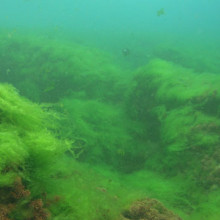
09:31 - Ocean Algae Mystery Solved
Ocean Algae Mystery Solved
Scientists have taken steps towards solving a thirty-year oceanographic puzzle, with the discovery that microscopic algae living in mid-ocean areas must be getting essential nutrients from as deep as 250 metres beneath the waves. But exactly how they are getting hold of nitrates from deep down remains a tantalizing mystery.
The study published in Nature, led by Ken Johnson from the Monterey Bay Aquarium Research Institute, provides some answers to the important question of how algae manage to flourish in areas of clear blue ocean where there are virtually no nutrients.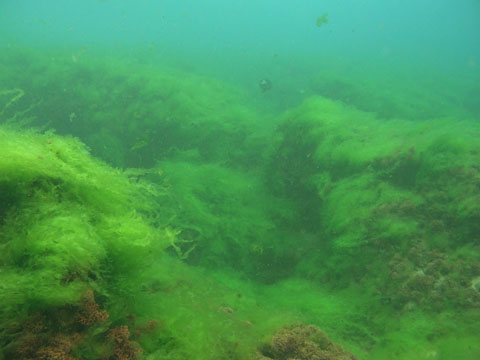
The team deployed a robotic drifter called an Apex float into waters off Hawaii. For two years it automatically bobbed up and down in the water column, between the surface and 1000 meters down, measuring oxygen and nitrate levels as it went.
They found that from January to October, concentrations of oxygen in the upper 100 metres gradually increased. At the same time, the concentration of nitrate in deeper waters, from 100 to 250 metres, decreased. This suggests that algae in shallow water - where there is enough sunlight - are photosynthesising and producing oxygen, while somehow grabbing nutrients from deeper, darker waters. But how they do this, is not clear.
Johnson and the team suggest there could be dormant microalgae living in deeper waters that are occasionally stirred up into shallower waters by swirling eddie currents. Reaching around 70 metres they would mop up nutrients then perhaps continue on up into the sunlit shallows under their own steam - some algae can swim using tiny whip-like hairs and others can actively control their buoyancy, and choose whether to sink or float.
The next step will be to deploy Appex floats in other parts of the ocean to see what's going on elsewhere including the Southern Ocean where nitrate supplies and algae growth are both much higher than in mid-ocean areas.
Understanding more about how these mid-ocean algae grow is vitally important because they account for a fifth of the carbon dioxide uptake in all plants and algae on the planet, so they play a vital role in regulating global climate.

12:13 - Growing an artificial lung
Growing an artificial lung
with Dr. Thomas Petersen, Yale University
Chris - Also in the news this week, researchers at Yale University in America have come one step closer to building a functional lung in the laboratory. The team stripped cells off the lung of a rat which left behind a connective tissue scaffolding which they then repopulated with new cells, and this newly formed lung successfully exchanged oxygen and carbon dioxide for a short time after it was transplanted into another recipient rat. And this offers hope that we might be able to build replacement lung tissue for people in the future. Well joining us to tell us a bit more about how he made this happen is one of the researchers, Dr. Thomas Petersen who is a Post Doctoral Associate in Biomedical Engineering at Yale.
Hello, Thomas. Thank you for joining us on the Naked Scientists. Tell us first of all - I gave a very brief summary and overview there - how did you actually do this work?
Thomas - Well you gave a very excellent summary. We start with a normal lung of a rat and treat it with a chemical solution to remove all the cells and this gives us this three-dimensional scaffold or skeleton of a lung, and that's a very important part because the 3D structure of a lung is quite complex and something that we couldn't easily make in the laboratory if we wanted to. So we can't make an artificial material that is in a shape of a lung. This scaffold can then be seeded with cells. A variety of cell types we used - both blood vessels cells and airway cells, and then we cultured this growing tissue in the lab for about a week, after which we can take it out and study it in a variety of ways, and we can also transplant it into rats as you mentioned.
Chris - And once you've got the scaffolding, how did the cells that you transplant onto that scaffolding know where to go, and what sorts of cells to turn into?
Thomas - That's a very good question. So there are two things that we did to try and help the cells go to the right places. The first - at a very high level - is we put them into the right compartments. So in the lung, you pretty much have two areas. You have the airway compartment and the blood vessel compartment, and so at a very high level, we just put the blood vessel cells into the blood vessels and the airway cells into the airways. The second thing we did to try and help this was during this one week of growth in the lab, we provided stimuli to the lung, so the lung was being breathed, similar to the way a patient is breathed on a ventilator, and we also pumped nutrients; a nutrient solution, through the blood vessels of the lung. So these two stimuli helped to encourage the cells to grow in more normal lung patterns. But certainly, we don't fully know why all of the cells seem to go to the right places, and that's something that we're interested in trying to look into further, going forward.
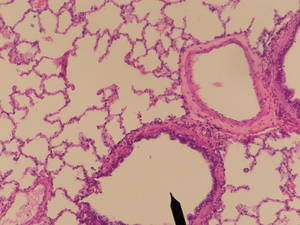
Chris - Because one of the interesting things about lungs is that it's not just a bunch of blood vessels and a bunch of airway cells. There are individual different types of cells in both structures but certainly in the airways, there are things like cells that make the surfactant, the chemical that makes the water lose its surface tension so the airways don't collapse for example. Those cells appeared and populated the airways in the right numbers in your tests. Do you think there are signals coming off of that underlying scaffold that direct the cells to turn into certain specialised forms?
Thomas - Yes, absolutely. Our most likely scenario is that there are cues left behind on this empty three-dimensional scaffold that are helping to direct the right cells to adhere to the right spots on the lung. There are other possibilities that we're interested in looking into, but that's really the most likely scenario, that there are some cellular signals that are staying behind on the scaffold.
Chris - And you were able to take this regrown lung which took what - a week or so to regrow? And then put that into a recipient animal.
Thomas - That's correct. So we performed left lung transplants on several animals. This is only short-term transplants for up to 2 hours, but they did work quite well. There were no large leaks of air or blood, and the primary function we're looking at evaluating is, as you said earlier, gas exchange. So whether the lungs can oxygenate the blood that's flowing through them and whether they can remove carbon dioxide out of the blood, and they performed very well on both of those aspects.
Chris - Why did you only go for 2 hours? Was that all that you had permission to do, or was it that the lungs at some point failed beyond that point, and there's more work to do?
Thomas - Right. Well it's a combination of both of those. We do have limitations on what we can do in the animals and 2 hours was our objective and the lungs were still doing fine. They were still breathing, there were still blood flowing through them after 2 hours, but certainly, we wouldn't right now expect that they would have functioned as well for a day or maybe even several hours. After 2 hours in some of the lungs, we were able to see small blood clots forming in some areas, and certainly, that would've gotten worse over time, and that's one of the things we need to work on in this going forward is, ensuring that no blood clots form in the engineered lung.
Chris - Now one obvious direct application of this is to say, well, if we do lung transplants on humans, whilst this does save lives, the long term prognosis is still quite poor because the immune system moves in and causes damage, infections move in and cause damage, and therefore, it's not a perfect solution. If we could take a lung scaffold and populate it with the person's own cells, so we didn't have to reduce the activity of the immune system, this would presumably be a very big short term goal for work of this type.
Thomas - Right. I would still call that a long term goal. We do obviously want to transition this work into human tissue, and the way to do that would be to start with a human or similarly sized lung scaffold and then obtain cells from a given patient. And they are having advances lately involving stem cell work, involving adult-derived stem cells that we could possibly use to repopulate this human lung scaffold, and that would avoid rejection in a transplant patient. I would estimate it would still take say, 20 years before we can grow a fully functional human lung in the laboratory.
Chris - Although I guess the ultimate goal and the reason I said a shorter term goal versus a longer term one is that you really want to be able to produce a complete lung de novo by using say, microfabrication techniques or something to lay down a scaffold so you don't have to borrow someone else's.
Thomas - Yes. Well there's a few ways in which you could get the scaffold to begin with. The first option would be a human lung that is not suitable for transplant, and there are quite a few available lungs that are just simply not good enough to use for transplant. It's also possible to potentially use the lung of a primate or even a pig. The molecules that make up this lung scaffold are highly conserved or highly similar across these species, and it would be highly unlikely that they would be recognised by the body as foreign - meaning they would not then be rejected.
What is a cold sore?
Chris: - The reason we get cold sores is because of a virus. It's a virus called Herpes Simplex Virus, HSV. It's one of the commonest human viruses. In fact, about 80% of adults have antibodies to this virus, indicating they've been infected. James Bond said, "Diamonds are forever." Well Herpes is for life. Once you've got it, you have it for the rest of your life and the reason for that is that the virus exists as what's called a latent state inside the cells of your nervous system.
Herpes simplex goes into the sensory nerves, the ones that supply the skin for example, and after you're infected, the virus goes along inside the nerve fibre to the cell body which is a structure where the nucleus of the cell is, and inside that nucleus is the DNA of the cell, and the virus adds its DNA alongside your own cell's DNA. So it just sits there inside the cell and periodically, and in response to various stimuli, the virus can come back out again. So if you get sun burned, if you get trauma to the skin, if you get rundown, or ill for some other reason, this can all prompt the virus or provoke the virus to switch on the DNA. In that DNA there are genes that tell it how to make new virus particles and they come back out down the nerve cell to the patch of skin that that nerve supplies, and the virus particles bud off from the end of the nerve, and infects the overlying skin, and you get a cold sore. That's got lots of virus particles, millions of virus particles in it, and they're infectious. You can then - if you get close to someone else, as in kissing close, you can pass the virus on.
Caroline: - Oh right. Okay.
Chris: - So I guess you want to know why do some people get it, some don't?
Caroline: - Yes.
Chris: - We don't know - because if you do this test, although you can find 80% of people have got it, only about 15% of people have regular so-called "reactivations." In other words, the virus only comes back periodically in about 15% of the people who've got it, and in an even bigger proportion, it can come back asymptomatically. You can shed the virus without realising it, in saliva. So it looks like there's either something about the virus that makes it come back in some people - there might be some genes that are slightly different in the virus or more likely, is that there's something different about the people that reactivate the virus much more frequently, and maybe they carry a gene or something that makes them more likely to reactivate it. But the bottom line is that it's normally getting rundown or sunburnt, or trauma to the skin that discloses the virus.
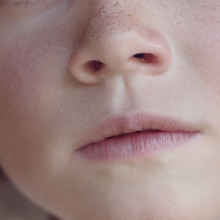
Can we taste without smelling food?
Helen: - Wow! It's really good question and you've hit on the right point that it's not just about our taste in our mouths. It's also our nose that leads to a sensation of flavour and taste, and we have two things going on. We have our tongues which have taste buds on them, in little ridges and valleys called papillae, and these are responsible for picking up the four and some people think five main tastes which are bitter, sweet, sour, salty, and savoury or 'umami'.
There's not much nuance to those different flavours, but we do pick those up in our tongue, and the rest of the taste that we have comes from smelling the food, from the odour molecules that come off it. They waft up our nose and essentially, fire nerves signals from somewhere called the olfactory mucosa inside your nose which has receptor neurons and they will tell your brain when you've picked up certain different chemicals in the food.
But interestingly, it's not all the smell that comes up your nose that is responsible for the taste. So the reason you can't smell when you have a cold is because your olfactory mucosa gets covered in goo and those receptor neurons really don't get anywhere near to those molecules of odour that they're interested in. But if you hold your nose, you might have noticed you can still taste quite well when you're eating, and that's because some of those molecules also go from your mouth through the internal passages, and still find their way to the olfactory mucosa. So it's no good just holding your nose if you don't like the taste of your medicine.
Chris: - I used to do that. The medicine for Brussels sprouts actually.
Helen: - It does help and interestingly, in a 2005 study in the journal Neuron, Dana Small from Yale University led a study where they put tubes up volunteers' noses. (I hope they did pay these people well because it does sound like a fairly nasty study.) One of the tubes went just to the nose. The other one went back into the mouth and they wafted smells up these different tubes. They put the people inside an MRI scanner, and showed that different parts of the brain were activated depending on if the smell went to their olfactory mucosa directly or whether it went into the mouth and then sort of wafted back up there. It makes sense that essentially, if you're smelling something from a distance, it's more like, "Oh goodie, there's some chocolate on the way. Perhaps I should go find myself some of that." Whereas if you're eating the chocolate, you're actually doing other things like preparing your body for a nice hit of fat and sugar that's going to come along with this chocolate that you're eating. So it seems something quite interesting is going on in your nose and your mouth to lead to the sensation of taste.
Chris: - Terrific. I still say holding your nose works well for Brussels sprouts. It did for me.
How is North determined?
Andrew - North would generally be determined, I would say, in terms of the rotation of a planet. So when we talk about North here on Earth, what we really mean is that you can look at the way that the Earth's rotating. There are two fixed points. There are two points on the Earth which never actually move at all and that's what defines where the poles are on earth. Now which one's North and which one's South is going to be determined by say, you look from the top and you see it going around clockwise, then that tells you which one you'd call North and which one you'd call South. So that's going to apply to any planet regardless of whether there's a magnetic field. Now of course here on Earth, we do have a magnetic field. It's actually not perfectly aligned with the rotation of the planet and as I think you're hinting, sometimes it even flips around. So the naming of the North and South poles in terms of magnetic fields of course, does come about historically because it was roughly lined up with the way that the Earth rotated, but it's not a direct physical link, if you like.
Chris - And this is slightly more speculative on his part, "Would there serious cartographical stress if the earth's polarity flips around?" I guess not really, would it? Andrew - Well, not for cartographers exactly, but it would have really serious consequences. I'm by no means an expert, but from my geology courses way back when, I remember that you can find certainly records of these flips and they correlate very well with mass extinctions. One of the reasons people think this might be is that the Earth's magnetic field protects us from an awful lot of nasty particles streaming through space. At the point at which it reverses, [the magnetic field] probably shrinks down to more or less nothing, and then all these particles can bombard the organisms living on the earth and...
Chris - This is solar radiation. It's that solar wind, isn't it?
Andrew - It's the solar wind and other cosmic rays in fact from other sources, and clearly causes major problems for Earth, so we really don't want that to happen and we don't know how much warning we'd get either if it was about to happen.
Chris - Historically, looking at the records written geologically in rocks, it's every 100,000 years or so. But it hasn't happened for 800,000 years, leading people to suggest that we're overdue. There is an anomaly over the Southern Ocean or the southern Atlantic isn't there, and the satellite ironically was put up to study the earth's magnetic field and it ended up floating across this anomaly, and got bombarded and it actually got messed up by the very solar radiation, that we're worried about basting the earth, so yes, a point well made. Thank you, Andrew.
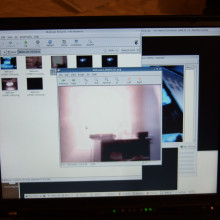
28:26 - Online social gaming - what's all the fuss about?
Online social gaming - what's all the fuss about?
with Steve Shipton, Technical Director of Studios, Playfish
Meera - This week, I've come along to the offices of Playfish in London who develop social games to see what all the fuss is about, and what goes into creating them. With me is Steve Shipton, Technical Director of Studios here at Playfish.
Steve - So a social game is a game that you play with friends. Friends will be necessary to complete certain aspects of the game. You'll be sharing features of the game with your friends, just generally moving away from playing alone.
Meera - What makes these types of games so popular online?
Steve - Part of that is that you can play the game in very short bursts and what you do, you share with your friends. So, you know, you're kind of showing off a little bit when you're playing the game and then your friend sees that, and then they want to get in on the action, and so on, and so on. There's kind of a viral cascade of people playing.
Meera - How popular would you say this field of gaming is? So how many players are there worldwide?
Steve - There's approximately 100 million people playing per day, playing social games.
Meera - Purely through sites such as Facebook?
Steve - Yes. In fact, that's just on Facebook and the Playfish games account for about 10 million of that.
Meera - So that's a lot of people. What do we know about the average player?
Steve - That's quite interesting. It's very different to traditional gaming and the split is pretty much 50/50, male/female. The actual age range can go anywhere between 15 to 55, but there is a core group in the 18 to 34 range.
Meera - Here at Playfish, you've created a variety of games varying from Pet Society where you create and own a pet, to Restaurant City where you manage a restaurant and have players or friends come and eat at the restaurant or work at the restaurant. What goes into developing these types of games?
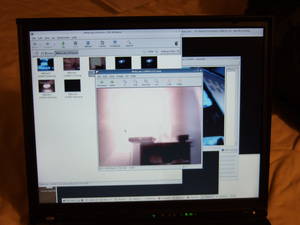
Steve - Each game must factor in some social aspect. Another thing that we use is to have items in the game that you can only collect with the help of your friends. Also, we need to allow people to play these games in very short bursts. A lot of times, people are playing at work or just relaxing at home, and they don't want to be spending half an hour in the solid session with that game. It's difficult for us to try and get the same sort of rewarding game play into that one minute play which is typical. We also need to think about how can we monetize the game. All of our games are free to play, but we need to have a coin economy in there and a cash economy so that if players want to, then they have the option of spending some money, and so keeping the game running.
Meera - A key point is that these games are free to play. So that's always an incentive for people to come on and start playing. But how do you keep them interested and keep your players there?
Steve - One of the big challenges for us is to keep the game fresh for existing players. They're very important to us and we want to keep them playing for as long as possible so they can get the maximum value out of the game. We have this whole philosophy where we run games as a service. So one of the differences with traditional gaming is that, whereas they will spend years and years making a game, our games are updated every single week. So each week, there's a new content, new features.
Meera - A lot of these types of games do seem to be purely for entertainment purposes, but could they be taken advantage of in terms of public awareness, or to create some educational initiatives.
Steve - We've actually got a game out called Geo Challenge in which you must identify a country's flags, the shapes of countries, locate capitals, things like that. That one is educational, but then due to the active game play nature of that where it just demands your attention for two or three minutes to do the quiz, it doesn't seem to be as popular as the management based games. Within games themselves, we always try to have a slight educational theme. So in Pet Society, you can buy various paintings that look a bit like the famous works and in our new game My Empire, you can build the 7 Wonders of the World.
Meera - Clearly, this field of gaming, is a big player in the world of gaming as a whole because recently, just a few months ago, Electronic Arts, that's EA games bought Playfish.
Steve - This is really great for the platform. Big games companies like EA finally taking notice and investing a significant amount of money. It means that we can now put game licenses on Facebook, and recently, we launched FIFA Superstars where you can manage your team to train them up to buy new players, and to play against your friends, and try to be number one amongst your friends.
Meera - And I imagine with the World Cup, this is excellent timing.
Steve - It'll be out to take part in a unique World Cup challenge within the game, and going forwards, lots of other football contests. Anything to do with FIFA basically will be in the game. So as you can see, the future for social gaming is going to be more integration with social platforms and bringing bigger brands to these social platforms that people recognise.
Helen - So, anyone who wants to can now manage their own football teams to see if they can do better than Fabio Capello, and perhaps England will get their hands on that cup, well, online anyway. That was Steve Shipton, Technical Director of Studios at Playfish.
How do you keep the fizz in a bottle of fizzy drink?
Chris - Okay. What do we think here in the studio? Helen? Helen - My guess is that you should not squeeze the air out because at least that by having the air, the carbon dioxide that's already been released when you first close it that somehow must help stop more carbon dioxide coming out too. Otherwise, you've got a sort of vacuum to fill and that the carbon dioxide will quickly come out of your drink if there's nothing for it to push against. Andrew - Yes, I absolutely agree with Helen actually...
Chris - You sound surprised!
Helen - I am only a biologist!
Andrew - Yes, exactly. We can't have biologists answering physics questions! I absolutely agree. Basically, there's loads of carbon dioxide dissolved in these drinks and the fizzing happens when the carbon dioxide is coming out of solution and turning back into a gas, and the rate at which that happens is determined by the pressure against which it's pushing. So, you want as high pressure as possible in the vicinity of the liquid to stop the gas coming out of solution.
Chris - Because you can buy those gadgets that will pump up the bottle again and put some pressure above the liquid. Some people have said this won't work because it's putting in air, not carbon dioxide. But the point is that air is 80% nitrogen. Nitrogen is really poorly soluble in water. So for the carbon dioxide to come out and go into the air above the bottle, it's got to increase the pressure because hardly any nitrogen is going to dissolve. So if you pump up the pressure even higher above the liquid, it'll make it even harder for the CO2 to come out, so I reckon that's the reasonable strategy.
Andrew - Yes, that's right. You just want the pressure to be as much as possible to stop it coming out of the solution.
...
Chris - The biggest determinant of keeping the drink fizzy actually is putting it in the fridge, because as the temperature of the liquid rises, it's ability to dissolve a gas like CO2 or oxygen for that matter drops. And therefore, the colder the liquid is the easier it's going to hang on to its CO2, so whacking it back in the fridge is absolutely what you've got to do.
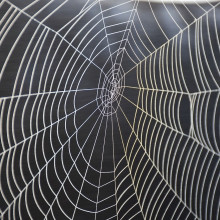
How do spiders spin webs across open spaces?
Helen - This is particularly relevant because I think there's been a hatching of spiders in Cambridge very recently. If I sit in my garden for more than about 5 minutes, I get turned into a spider web. So, they're doing it at the moment.
Chris - Turned into a spider web?
Helen - Okay. One gets made around me. So they're definitely out there doing this but how are they doing it?
Chris - Hopefully, it's a money spider. Yes, a good question, isn't it? because you think, "I see this web. It goes from one tree over there to one tree over there. did the spider go all the way down, walk along the ground, up the other tree, and then string this piece of thread across the two?" The answer is no, of course. It's too small to know these places exist relative to each other.
The way the spiders do this actually is that they sit on the end of one twig or something, and they stream out this very long but very light thread of silk which gets picked up on air currents and it floats away from the spider, and the spider is continuously testing the tension in the thread. When it feels it goes taut, it realises it must have snagged on something. So it will then fix that end and go across counting steps - because the spiders measure distance by counting their steps, and it therefore knows how far away it is. It then counts back halfway, knows that it's halfway back across and then drops a perpendicular. So it goes down to the ground and that's the middle of its web in a sort of T-shape, and fixes the bottom thread, and then after that, it's got the three points it needs to start making the web. So that's how it does it, ingenious stuff.
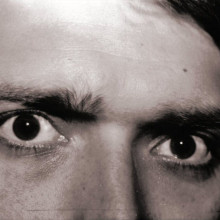
What's the point of eyebrows?
Helen - What's the point of eyebrows? To look lovely so we can paint them in and be very beautiful. No! The main theory is, the eyebrows - rather muckily - stop sweat from dropping into our eyes. In fact, the prominent brow that we have, and our ancestors had, is to help to stop us having to mop our brows quite so much. If you watch hot tennis players at the moment in Wimbledon, you might see that having eyebrows does help, and I think that people have said that if you lose an eyebrow, or if you shave it off - or if your friends do perhaps, then you will get more sweat in your eyes. I think it does seem to actually work especially if you've got big bushy eyebrows. That really does help to mop things up. So don't pluck all your eyebrows out, unless you want to be impairing your vision on hot days!
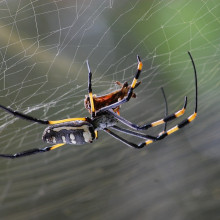
Do spiders have eyelids?
Chris - They don't. Spiders have several pairs of simple eyes that filter light through a lens material onto photo receptors, light-sensitive structures, underneath. They don't have a call for having any kind of eyelid type structure. Their eyes are open all the time, so they'll keep an eye on you because they've got plenty of them!
Does take-off weight vary with latitude?
Andrew - The strength of gravity on Earth is measured in terms of how fast it accelerates things and roughly speaking, it's about 10 metres per second every second. That's how fast it accelerates things. And you're absolutely right that it differs slightly depending on whether you're at the equator or at the poles, and there are basically two effects that are contributing to that. The first is actually the rotation of the Earth itself. We were saying earlier on that if you're standing on the poles, that point is fixed so you're not moving at all whereas if you're at the equator, you're moving very fast around it in a circle, and that reduces the gravity that you feel by what's actually 3.4 centimetres per second per second. So that's about a 0.3% effect. It reduces the weight by 0.3%. You also said correctly that the Earth actually bulges around the equator and I think if I'm getting this right, that's going to make it up into about a 0.5% effect. So it's going to have a 0.5% effect on the weight that's measured of your Boeing 747 which is not really a huge amount in terms of the uncertainties involved in aviation.
Chris - [With aviation] they've also taken into account extra things in terms of safety factors before those kind of take offs anyway. So it's already been taken account of.

What the England football team cost a nation
Could playing football at high altitude affect how you kick the ball?
Chris - Well actually, there is quite a bit of science behind this and in fact, your mates, Rick, are probably right it turns out. If you look at how footballs behave when they spin through the air as they fly, when they fly at slow speeds, what they are doing is parting the air stream and the air forms a nice even layer on either side of the football. It forms what's called laminar flow around the football and because the air is sticking to the surface of the ball, it's applying a drag to it. But if you speed the ball up even more, so you go past a threshold point at which the air flowing past the ball is no longer in this lamina configuration. It becomes so called turbulent. Suddenly, people have found, the drag on the football plummets and becomes much, much lower, even though you've increased the speed and the increase would be only at small amount, you suddenly got a very, very low level of drag, and it then begins to increase again gently.
So when footballers are doing these incredible, sort of 'banana' shots, what they're doing is cannoning the ball away at about 30 metres a second, 70 miles an hour, and at that speed, the air is travelling in a turbulent way past the ball. So the amount of drag is actually quite low, but as the ball slows down, it then goes into the 'high drag regime' as it's known. In other words, the speed becomes such that instead of the air being turbulent around the ball, it begins to stick to the surface of the ball again and that increases the drag very markedly, and this abruptly decelerates the ball, and it can also make a changed direction which is why the ball can slew into the goal in this bizarre way that we sometimes see. So, speed is of the essence and therefore, the amount of that's sticking to the ball is important. So if you look at what's going on in Jo-burg, that stadium is at about 4,000 feet. There's an index that people use on aeroplanes which is called the indicated air speed. This is a record of how fast the air is apparently going past the aeroplane, and we know by rule of thumb that it's about 2% wrong for every thousand feet in height you go up. So in other words, at 4,000 feet, it would be 4 times 2% which is an 8% error. In other words, the ball will be feeling drag as though it were going about 8% more slowly than it really is. So when your footy player is booting the ball, having trained at sea level, knowing how the ball performs in air of the density you're going to get at sea level, actually the speeds they're booting it at to make these effects happen are going to be all wrong because the ball is actually travelling and experiencing drag about 8% lower than it ought to at sea level. Therefore, this will if you're a highly seasoned, highly practiced footballer, unless you have an opportunity to realise this is what's happening, there could be an error in the way that you're going to boot the ball. It's amazing to think how much there is going on in physics in football, isn't it?
Andrew - Yeah, well that Wayne Rooney is well-known for his love of physics.
Chris - But not for his knowledge of it nor his ability to score goals this year unfortunately.
Can birds see blue?
Helen - Well, yes. All you have to really do is look at a peacock's tail to see just how important the colour blue is for birds and in fact, birds have really extraordinary vision because they have four cones. As well as the three that we have as mammals and humans have, they can also see UV and near UV light, and the reason they do this is for all sorts of things. We think it plays a really important role in sexual signals if you cut out the UV part of feathers, it really kind of interferes with how birds can communicate with each other. And it's also quite important for them in their ability to find prey and to forage and find other food. So UV light is very important and they have great colour vision too. So birds are really quite championing the world of colour vision actually, and can see much more than we can.
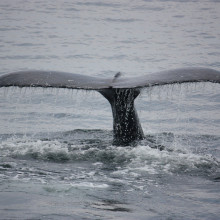
Could a human survive swallowing by a whale?
Helen - There are plenty of accounts. They're all on the internet and I should think they are all untrue because there are all sorts of reasons why I don't think it's likely that anyone's really going to survive - at least not for very long - inside any of these animals. We could look at it if you like.
Which of the whales could physically swallow us? That's the first question. Can we actually get into their gullet, down their oesophagus? If you're talking about Baleen whales with baleen plates that filter tiny plankton and creatures from the sea, like a blue whale, the answer is no because their oesophagus' are very tiny thin things, a couple of inches across. Even a blue whale's oesophagus only reaches about 10 inches if you stretch it. So I don't think that's going to be enough for us to get through. Maybe a child, but let's not try that. So that really leaves the toothed whales, the other part of the whale group, things like killer whales and sperm whales. Yes, they can swallow large prey. They can swallow large seals whole. We know sperm whales can swallow giant squid whole, so chances are, they could swallow a human whole. If you can survive the being swallowed part of it and get past all those teeth, you then will find yourself in a complex digestive system. They have up to four stomach chambers, like a cow. Find your way through those if you can while also dodging all those nasty digestive enzymes that are going to start corroding your skin.
Chris - Well not least the lack of oxygen, sure it is.
Helen - Absolutely. That was my final point - was there really isn't any air in there. If there is any gas inside a whale, it's probably methane, and that's not going to help you out very much. We do know that whales can be flatulent, so there is some gas. They do have gassy pockets, but it's not air, not good to breath. Certainly, no air inside a fish, so I think that's really what's going to get you in the end. So I'm afraid no.
But there are lovely stories. I like Rudyard Kipling's, "How the Whale Got it's Throat" which tells of a shipwrecked mariner who was swallowed by a whale and he caused such a fuss that the beast agrees to release him, but the mariner, to prevent this ever happening again, forces a wooden grate into the mouth of the whale so that it won't swallow anymore people, and all it can do is swallow little fish. So he got that half right - that's half of the whales, the Baleen whales. So, no, I don't think there's any chance. I think all the stories of people surviving being inside a whale are made up. Sorry about that.
Will rockets accelerate until they run out of fuel?
Andrew - In fact, it would just carry on accelerating forever until it ran out of fuel because the reason that it's accelerating is not so much to do with measuring particular speeds. It's more just to do with the fact that it's throwing out lots of mass out of its rear end, to put it nicely, and when it does that, it feels a little push. This is one of Newton's laws - every force must have an equal and opposite force. It receives that equal and opposite force, and as a result, it accelerates.
Chris - This reminds me of a question we had in the Naked Scientists awhile back which was, how hard would you have to pee to push yourself over. I think the answer we've worked out was, you would have to be able to pee and produce a fountain, more than 20 metres high in order to achieve sufficient force that would have any kind of backward propulsion, assuming a modestly weighted man. Similar physics, Different situation.
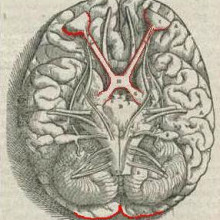
61:55 - Why is the right side of our brain in control of the left side of our body?
Why is the right side of our brain in control of the left side of our body?
We put this question to Roger Keynes, Professor of Neuroscience at the University of Cambridge...
Roger - Well that's a tough question. I mean, it's a "why" question and it's an evolutionary question, and answering "why" questions in biology is very difficult.
In this case, I think we have to go back several hundred million years to see the very first evolving animals with complicated nervous systems that are getting more and more sophisticated.
At some point, vision evolved and probably started becoming more important when mammals developed binocular vision, with their two eyes looking forwards from the front of the animal.
This arrangement means that when and animal is looking at something, each of the two retinas - one in each eye - are seeing the same thing, providing binocular 3D vision.
But the point there is that the lens of the eye inverts the image that forms on the retina, so in binocular animals like us, things seen to our left are sensed by the right half of our left eye, and by the left half of our right eye, and that's a product of the physics of the situation.
If each eye were to send all its nerves to just one half of the brain, the picture of the world on one side of the body would be split between the two halves of the brain. Instead, it makes much more sense for this picture to be fused in just one half of the brain by the crossing over of some of the nerves of the two eyes.
But more recently, people have been thinking theoretically about how can you wire up a clever brain just on first principles and they decided that, probably, it's useful to wire things crossed over simply because - for reasons we don't need to go into - it prevents or reduces wiring errors compared with if you wire things up just on the same side of the brain.
Diana - So wiring might be better off crossed, and binocular vision could be the cause of our brain alignments; and some theoretical work has indicated that a brain is actually more likely to wire itself up correctly during development if one half controls the opposite side of the body. On the forum, RD pointed out that the crossover is still present in eyeless animals and insects, while Diver John said that it could just be a quirk that all subsequent life forms have adapted to.
- Previous New Lungs, Please!
- Next Watching Worlds Wander










Comments
Add a comment